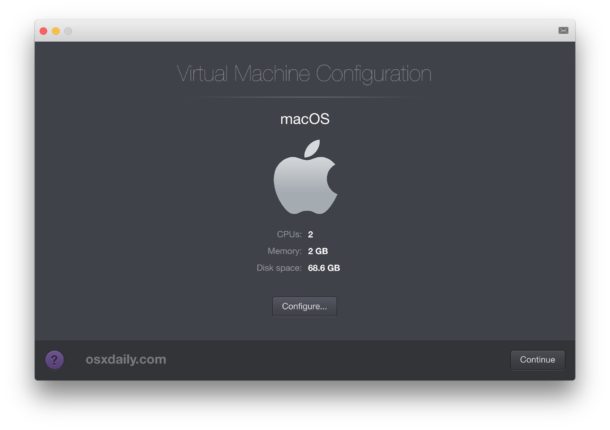


Under ‘’Display’’, set ‘’Video Memory’’ to 128MB.Then check-mark the ‘’Enable PAE/NX box.Choose the ‘’Processor tab and assign two processors - having a CPU with a lot of power to spare enables you to assign more processes, but that’s not so crucial.Make sure that the Chipset is set to ICH9.Under the settings menu, choose ‘’system’’ and remove ‘’Floppy’’ from the boot order.To do that, you need to right-click on the macOS VM and click on ‘’Settings’’. Select ‘’Virtual Hard Disk’’ and set the disk size (minimum 50GB - macOS requires at least 35 GB of storage)Įditing the macOS Monterey Virtual Machine SettingsĪfter creating the macOS Monterey VM, you need to edit its settings before starting it.Select ‘’Create a hard disk now’’ and click on ‘’Create’’ - it will open a new screen.Select the amount of RAM you want - consider the above-mentioned advice.Name the machine as you like it, and remember the name, you’ll need it later.(VirtualBox automatically detects the OS) Take a look at our screenshot, and follow the steps. For example, if you have 32 GB, you can usually give 24GB without any issues. The more RAM you can give to the VM, the better, but leave some for the host system. Otherwise, your operating system may work poorly. You should limit the amount of RAM for the VM to half of what your system has.


 0 kommentar(er)
0 kommentar(er)
